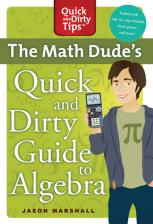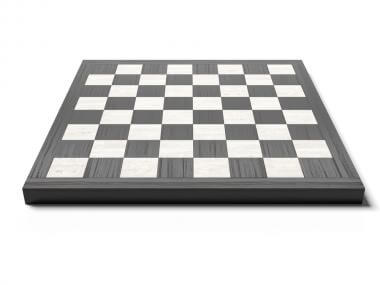What Are the Odds of Successfully Navigating an Asteroid Field?
What are the odds of successfully flying through an asteroid field like the one in The Empire Strikes Back? Are they really 3,720 to 1 as suggested by C-3PO? Or are they much worse…or perhaps better? Keep on reading to find out. And May the 4th be with you!

Hang on—let me try that again.
It’s the beginning of May, which means that two very important days will soon be upon us: Mother’s Day and May the 4th. You know, as in “May the 4th be with you,” as in “May the force be with you,” as in Star Wars Day!
In honor of that special day, we’re going to talk about a famous piece of math from The Empire Strikes Back. Namely, the odds of successfully navigating an asteroid field.
Did the brainy droid C-3PO get the calculation right? Are the odds really 3,720 to 1? Those are exactly the questions we’ll be answering today.
Sponsor: Visit GoDaddy.com to get your $2.95 .COM domain. Some limitations apply, see website for details.
Star Wars Math

Upon making this bold and perhaps reckless decision, the ever-attempting-to-be-helpful droid C-3PO tells Han: “
Sir, the possibility of successfully navigating an asteroid field is approximately 3,720 to 1.”
Han being Han, of course, replies: “Never tell me the odds.”
Does C-3PO know what he’s talking about? Or is he just a “bucket of bolts,” so to speak? To figure that out, we first need to understand what odds are. So, without further ado…
What Are Odds?
When we first talked about odds and probabilities, we learned that probability is a number between 0 and 1 that tells you the likelihood that something will happen. In particular, a probability of 0 means there’s literally no chance of that thing happening, a probability of 1 means that it’s certain to happen, and a probability in between these extremes such as 0.5 means there’s a 50% chance of it happening.
Odds, on the other hand, are kind of (pardon the pun) odd because they tell you essentially the same thing as probabilities but in a rather funny and somewhat convoluted way.
The most common way to write odds is what’s called “bookmakers odds.” For example, 3-1 (pronounced “three to one”) odds of a horse winning a race means that for every four races (the total of the two numbers in 3-1), the horse will lose three times and win once. In other words, the first number is the number of ways or times that something (in this case the horse winning) won’t happen and the second is the number of times it will—at least according to the odds.
Odds For and Odds Against

Alternatively, odds can be written in favor of something happening. In this case, the odds are listed as the number of times something will happen for some number of times that it won’t. In other words, odds in favor are the reverse of odds against.
So 1-3 odds in favor of a horse winning (which is never how the odds would be reported by bookmakers) means that the horse will win once for every three times it loses. It’s important to note that the meaning here is the same either way, we just write it differently.
Do C-3PO’s Odds Make Sense?
Which brings us to C-3PO. Was he right when he said “The possibility of successfully navigating an asteroid field is approximately 3,720 to 1?” Maybe not. It all depends on if C-3PO is talking about odds for or odds against. Since odds against are more common, you might assume that’s what he means. Since he feels the situation Han is flying into is a dire one, this view that 3,720 to 1 represents the odds against success makes sense.
But then again, C-3PO is specifically talking about the odds of “successfully” navigating that asteroid field, which sounds a lot to me like he’s putting forth odds for it happening. In which case he’s actually saying that for every 3,720 times Han successfully navigates the field, he won’t be able to do it once. Which are pretty favorable odds. And given the threat posed by their pursuers, those odds make the asteroid field look like a safe bet.
As such, I’m sure that C-3PO really did mean his odds as odds against, and it’s actually just the ambiguity-ladden English language portion of his logic (plus my willingness to hyperanalyze his words in the name of math!) that’s causing any confusion. Which is yet another reminder about how careful we need to be when expressing mathematical concepts that have very precise meanings using everyday language.
What Are the Odds of Navigating an Asteroid Field…Really?

Actually, no. The truth is that you could fly semi-haphazardly through the asteroid belt in our Solar System probably thousands—if not millions—of times without ever hitting an asteroid. Why? Because in the real universe asteroids are spaced out way, way more than they are in the movies. For example, if you crammed all of the asteroids in our Solar System into a single ball, the volume of that ball would be only about 4% the volume of the Moon.
In other words, asteroids are relatively small, and really far apart, and therefore just not as dangerous as C-3PO would have us believe. Of course, if you did run into one it would be detrimental to your spacecraft. But, thankfully, the odds of that are extremely small.
Wrap Up

Please be sure to check out my book The Math Dude’s Quick and Dirty Guide to Algebra. And remember to become a fan of the Math Dude on Facebook where you’ll find lots of great math posted throughout the week. If you’re on Twitter, please follow me there, too.
Until next time, this is Jason Marshall with The Math Dude’s Quick and Dirty Tips to Make Math Easier. Thanks for reading, math fans!
Asteroid field image from Shutterstock. C-3PO image from Featureflash / Shutterstock.com. Darth Vader image from nevenm / Shutterstock.com.
You May Also Like…






